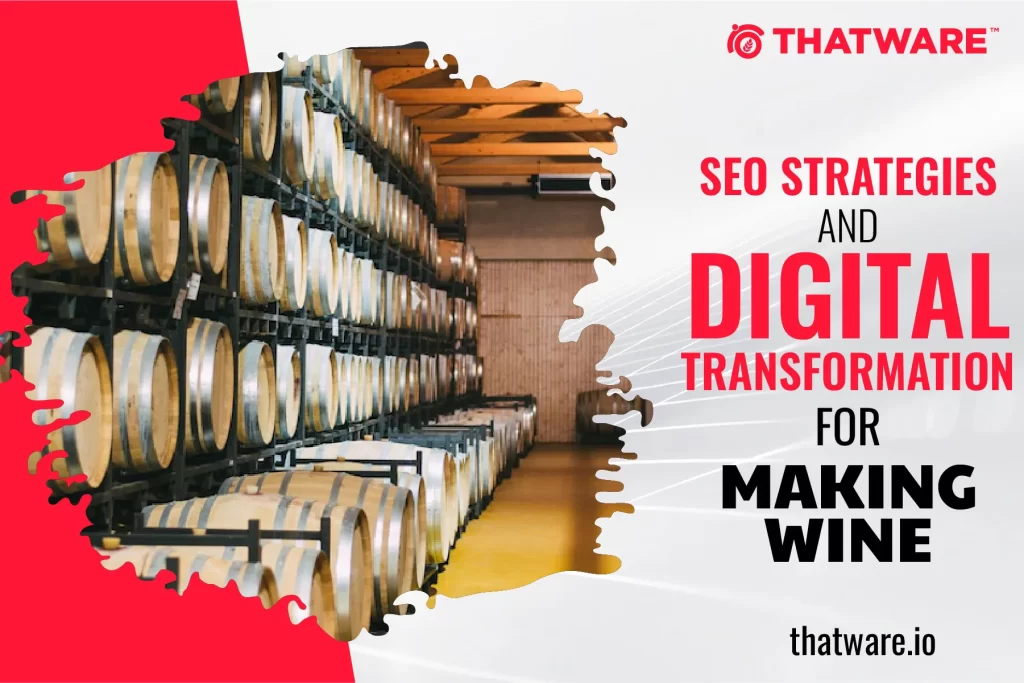SEO, or Search Engine Optimization, isn’t just about how well your website ranks on Google and other search engines – although that’s certainly important. Search engine optimization can help you develop the most-trafficked, most-engaging website possible to market your wine business. To get started, consider these key elements of an effective SEO strategy for your site.
Step 1: Outline your competition
You first need to know your competition when trying to figure out the best strategy for a wine-making business. This can be done by looking at their ratings online and on their website. You should also know what keywords they target on social media sites like Facebook or Instagram and how many followers they have. In this way, you can ensure that your strategy differs from theirs so that you are not competing with them. Text (six+ sentences): Step 2: Identify Keywords That You Want To Be Ranked Higher For On Google. The next step in creating the perfect SEO strategy for a wine-making company is figuring out which keywords it wants to rank higher for in Google search results. If it wants to target specific terms, it should try adding them to its page title tags, meta descriptions, and content. If it’s looking for broad terms to get more exposure, it may want to incorporate some of those into its homepage design or navigation bar links.
Step 2: Optimize Your Website
When you optimize your site, you’re making sure that it is set up in a way that will help search engines find it. Search engines rely on various factors when determining how to rank your site, but the most important is how often people visit your site. An easy way to increase the number of visitors to your site is by including social media buttons on your pages. Use keywords in each page’s title tags and meta descriptions to drive more traffic from search engines. These small text snippets appear in search results for terms related to your site or business. The key here is using words and phrases relevant to what people might be searching for, so think about what customers would type into Google or Bing when they are looking for something like yours.
Step 3.1: Figure Out What People Want To See on your site
With so many people visiting the internet, businesses must stay up-to-date with what their visitors want. This means you need to know what people are looking for when visiting your site. Luckily, there are many tools you can use to figure out what people want from your website and how it needs to change for them to find what they’re looking for. One of the best ways is using Google Analytics or even a simple survey with an email list. You’ll want to ask questions like:
– What content would you like to see more often on our blog?
– Which products/services would you like us to offer?
– What types of events should we have at our winery?
– What wines do you enjoy drinking? You’ll also want to ask open-ended questions, such as What would you tell someone who is thinking about visiting our winery? You’ll then be able to use this information and some other basic research (keywords) to figure out which phrases need a boost and which don’t get enough traffic. After figuring this out, the next step will be determining where this content should live on your site.
Step 3.2: Improve On What You Have
Make sure your site has clear navigation and a simple, easy-to-use interface. When deciding on the best design for your site, usability is key. The easier people find the information they need, the more likely they will stay on your site. In addition, make sure you offer content that’s both engaging and useful so that visitors will want to come back often. Add relevant links in articles that readers can click through to other pages of your site or external sites with additional information. You can also include lists of related articles or web pages with related links. These techniques help people get what they need from your site quickly and easily, which means they’ll be more likely to stick around and explore other areas of your site and recommend it to their friends.
Step 4.1: Figure Out Who Would be Interested in your Site
Figure out what your target audience is. If you’re running a wine business, your audience might be different than if you were running a blog about celebrities. Who would be interested in reading your site?
Figuring out who would be interested in reading your site is essential because it will help you understand what people are looking for when they search for similar things on the internet.
Step 4.2: Contact Those Potential Visitors
After you have completed the previous steps, you should have a list of people who are potentially interested in your wine and are on the fence about buying it. The next step is to contact them with an offer of free or discounted samples or a coupon for their next purchase. You can also try contacting them via social media, email, or telephone. Make sure your message is short and clear, so they will know what you’re offering without reading more than one sentence!
